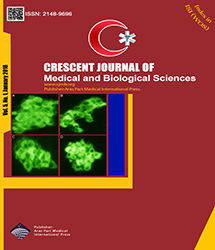
| Original Article | |
| Immunogenic Properties of Sonicated Multivalent Antigen of Pseudomonas Aeruginosa | |
| Sanam Rezaei Benam1, Asghar Tanomand2, Behbood Jafari1 | |
| 1Department of Microbiology, Islamic Azad University, Ahar Branch, Ahar, Iran 2Department of Microbiology, Maragheh University of Medical Sciences, Maragheh, Iran |
|
|
CJMB 2018; 5: 040-044 Viewed : 4836 times Downloaded : 3450 times. Keywords : Pseudomonas aeruginosa, Multivalent antigen, Immunization, Vaccine candidate |
|
| Full Text(PDF) | Related Articles | |
| Abstract | |
Objective: Pseudomonas aeruginosa is one of the opportunistic pathogens that takes the advantage of patient"s immunodeficiency and is one of the major causes of nosocomial infections. Multivalent vaccines such as those using the collection of secretory antigens and inactivated or killed whole-cell can be effective in preventing the infections. This study intended to evaluate the protective effect of P. aeruginosa whole-cell antigen in preventing the infections. Materials and Methods: In this study, sonicated multivalent antigen was provided and active immunization of female BALB/c mice aged 6-8 weeks (4 groups each with 7 mice) was carried out by subcutaneous, intraperitoneal and intramuscular administrations on days 0, 14 and 28. The fourth group was selected as the control group of the study. One week after each injection, on days 7, 21 and 35 blood samples were taken from mice and after isolating the serum, indirect ELISA was carried out to evaluate the produced IgG antibody against sonicated multivalent antigen of P. aeruginosa. Results: According to the results, due to the complexity of P. aeruginosa pathogenicity, using the multivalent vaccines such as the collection of somatic and secretory antigens, can be effective in the prevention of infections. ELISA results showed significant antibody production in subcutaneously, intraperitoneally and intramuscularly injected groups compared to the control group. Comparing the immunization of antigen based on the route of injection showed that there was no significant difference in induced immunization between the groups (subcutaneous, intraperitoneal and intramuscular injections). Moreover, immunized mice showed significant protection against intraperitoneal challenge with 7.5 × 107 CFU (2× LD50) P. aeruginosa. Conclusion: The sonicated antigens can have a more effective role in immunization and the prevention of mortality among mice infected with Pseudomonas. |
Cite By, Google Scholar
Online Submission System
 CJMB ENDNOTE ® Style
CJMB ENDNOTE ® Style
 Tutorials
Tutorials
 Publication Charge
Medical and Biological Research Center
About Journal
Publication Charge
Medical and Biological Research Center
About Journal
Aras Part Medical International Press Editor-in-Chief
Arash Khaki
Deputy Editor
Zafer Akan


















